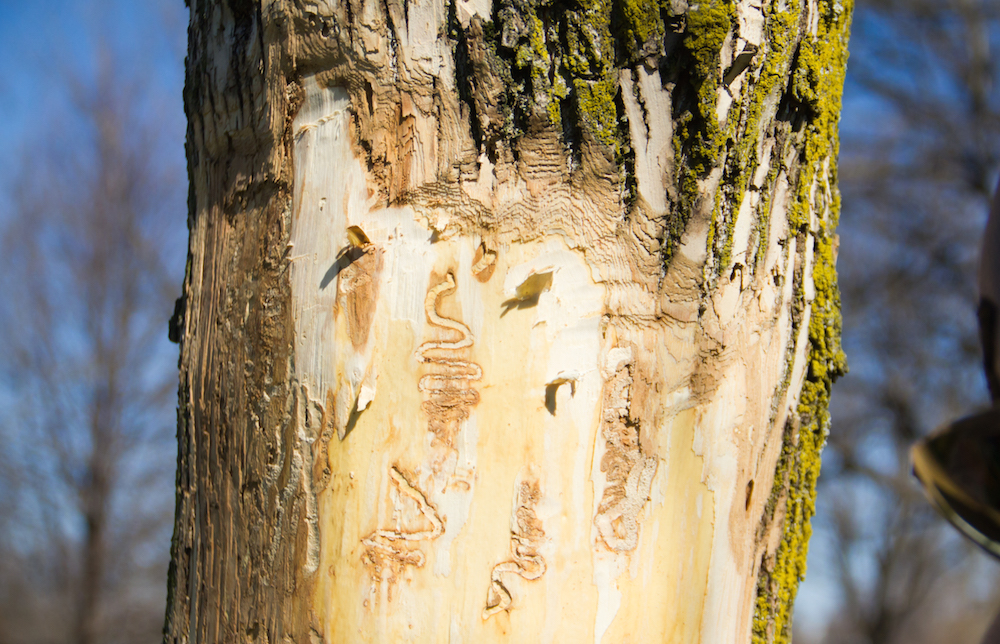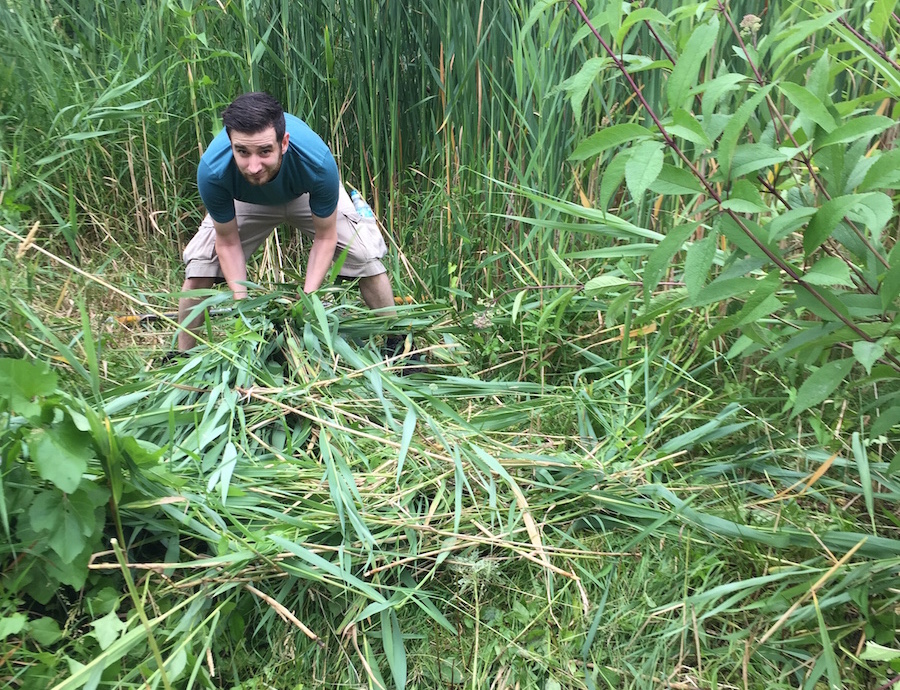Invasive species are not native to a specific location and can cause damage to the environment, human economy or human health.
Globalization and the spread of invasive species
Globalization allows increasing numbers of invasive species to cross national borders, making invasive species a common problem for many parks across the country. An invasive species is a plant, fungus, or animal that is not native to a specific location and which has a tendency to spread to a degree believed to cause damage to the environment, human economy or human health. The Olmsted Park Conservancy takes great strides to combat invasive species using integrated pest management (IPM). IPM is a broad based, integrated approach to controlling pests that aims to suppress populations of invasive species to a level that is not harmful to the environment while pursuing actions that prevent the spread of invasive species to new areas. Currently, the Olmsted Parks Conservancy competes with several invasive species that threaten the health and integrity of our historic parks. One such threat is the Emerald Ash Borer (Agrilus planipennis), an invasive species from Asia that came to the United States in the 1990s in shipping crates.
Emerald Ash Borer (EAB)
The EAB larva feeds on the vascular tissue of ash trees in an s-shaped pattern. When the number of larva in a tree is high, these feeding galleries overlap each other and girdle the tree, cutting off all nutrient transport and killing the tree. The management of EAB in the Olmsted Parks is tailored to slow pest progression through our parks, and to preserve high value ash trees into the future. Constant monitoring, pest sequestration, tactical removals and trunk injected insecticides are the tools we utilize to manage this growing problem. Once an Ash tree is infested, the only way to save it is to treat with an insecticide. As an organization, we scrutinized numerous insecticides to find those products which balance efficacy, cost and environmental/user friendliness. For more information and to donate to our Save our Ashes fund visit: https://www.bfloparks.org/support/
Invasive Plants
Another invasive species that threatens the Olmsted Park Conservancy is common buckthorn (Rhamnus cathartica), a deciduous species of shrub that is native to Europe. Common buckthorn was introduced to the Olmsted Park system in the park’s early years but in time it has proven to be an aggressive, invasive species. The Conservancy has done a good job removing this invasive species from most of the park system, however, in some areas this species proved difficult to suppress. In 2013, the Conservancy initiated a large scale effort to remove common buckthorn from the North shore of Hoyt Lake, in Delaware Park. The buckthorn in this area had overtaken most of the habitat and was preventing a healthy understory from forming under the mature trees. To date, the Conservancy has made great progress in removing buckthorn in this area through mechanical efforts and through the help of volunteers.
There are several other invasive species of herbaceous plants found in the Buffalo Olmsted Parks, including lesser celandine, phragmites, common periwinkle and Japanese knotweed. These plants can pose a threat to the park landscape if left unchecked. Our zone gardeners help keep these plants in check by removing them from garden beds and maintained meadow areas.




